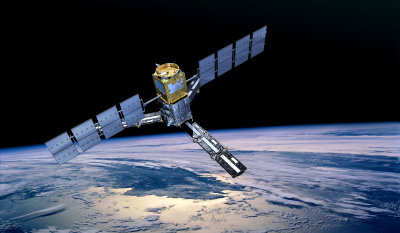Nanoparticles strengthen magnesium
Materials scientists of the Helmholtz-Zentrum Geesthacht develop new magnesium materials for vehicles, airplanes and satellitesin the EU-project EXOMET, which is coordinated by the European Space Agency (ESA). The European Union funds the ambitious project with 10 million Euro, 27 partners will contribute a further 10 million Euro. The researchers from Geesthacht will receive about 550,000 Euro, including their own contribution of 180,000 Euro.

Materials scientists of the Helmholtz-Zentrum Geesthacht develop new magnesium materials for ground bound vehicles, airplanes and satellitesin the EU-project EXOMET, which is coordinated by the European Space Agency (ESA). [Picture: ESA]
The load-bearing parts in a vehicle are very often made of steel. Due to its exceptionally high strength, steel often cannot be substituted that easily. Alternatives are light metals such as aluminum and magnesium. Nevertheless many engineers nowadays use, for instance, magnesium and utilize it for several vehicle components. This is because the low weight is one advantage of magnesium. Magnesium weighs only a quarter of steel and is even 30 per cent lighter than aluminium. The fact is that the mileage can be reduced by one litre per 100 kilometres, when a vehicle weighs 200 kilogrammes less. This means that less emission pollute the environment, because less greenhouse gases leave through the exhaust pipe.
Even more weight could be saved, if more car components, for instance the space frame or the chassis and motor parts, were made of magnesium. Materials scientists at the Magnesium Innovations Center – MagIC – at the Helmholtz-Zentrum Geesthacht intend to develop new magnesium materials in the recently started project EXOMET.
These materials are to compete against aluminium, titanium or steel, too: The strength of magnesium is meant to be greatly increased. For that purpose the scientists use nanoparticles. „Nanoparticles have specific characteristics“, explains the project manager in Geesthacht, materials scientist Dr. Norbert Hort. „You only need very little substance in order to give a material with well-known properties an entirely different character. The inner structure of the new material dominates the properties.“ In the case of magnesium, this means that only about half a per cent of nanoparticles need to be added.
In doing so, the scientists also consider the economic and ecological aspects: The nanoparticles will be provided by recycling industrial waste products, which otherwise would have to be elaborately disposed of; for instance, silicon carbide, aluminium oxide as well as nano carbon particles, also known as soot.
The project EXOMET is being coordinated by the „European Space Agency – ESA“. The ESA is interested in new and especially light materials for satellites and rocket components. However, before these new materials can be used, they need to be thoroughly tested. Norbert Hort: „As we only use small amounts of the particle substance, it is very difficult to find the particles in the material's cast condition. But that is important for the characterisation. Otherwise I would only know the new property without knowing precisely, why the material has this property.“ The scientists would like to find the particles by scanning electron microscopy and also to characterize exactly the microstructure of the material.
A comparison illustrates the complexity of this search:
In a magnesium material the nanoparticles are spread as follows: The content of a match box full of mustard seeds would be evenly spread in a 30 cubic metre container full of gravel. For one test a wheelbarrow full of gravel now may be examined with a magnifying glass in order to find one mustard seed.
The Project EXOMET is coordinated by the European Space Agency – ESA, based in Noordwijk, the Netherlands, the coordinator is Dr. David Jarvis. The 27 partners have about 20 million Euro at their disposal for the next five years. The subproject in Geesthacht, under the direction of Dr. Norbert Hort, head of department in the Institute of Materials Research, holds the title „Metal Matrix Nanocomposites (MMNCs)“. In Geesthacht about 730,000 Euro will be expended for the development of the new material.
Contact:

Helmholtz-Zentrum Geesthacht
Phone: +49 (0)4152 87-1648
E-mail contactMax-Planck-Straße 1
21502 Geesthacht
